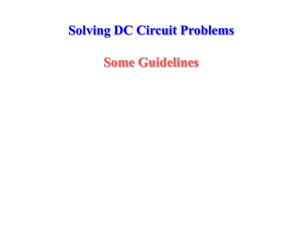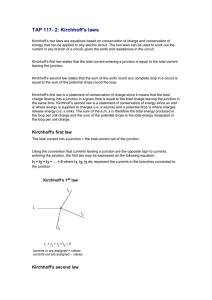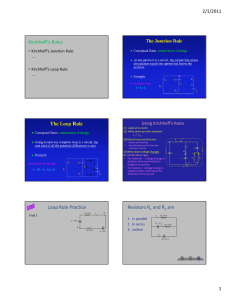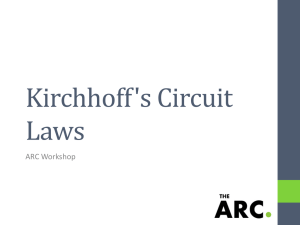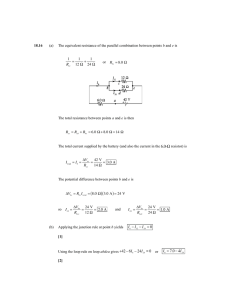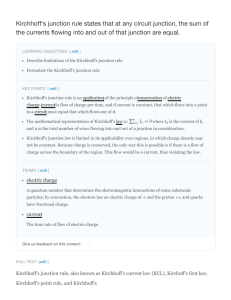CHAPTER 20 KIRCHHOFF`S RULES AND CONSERVATION
advertisement
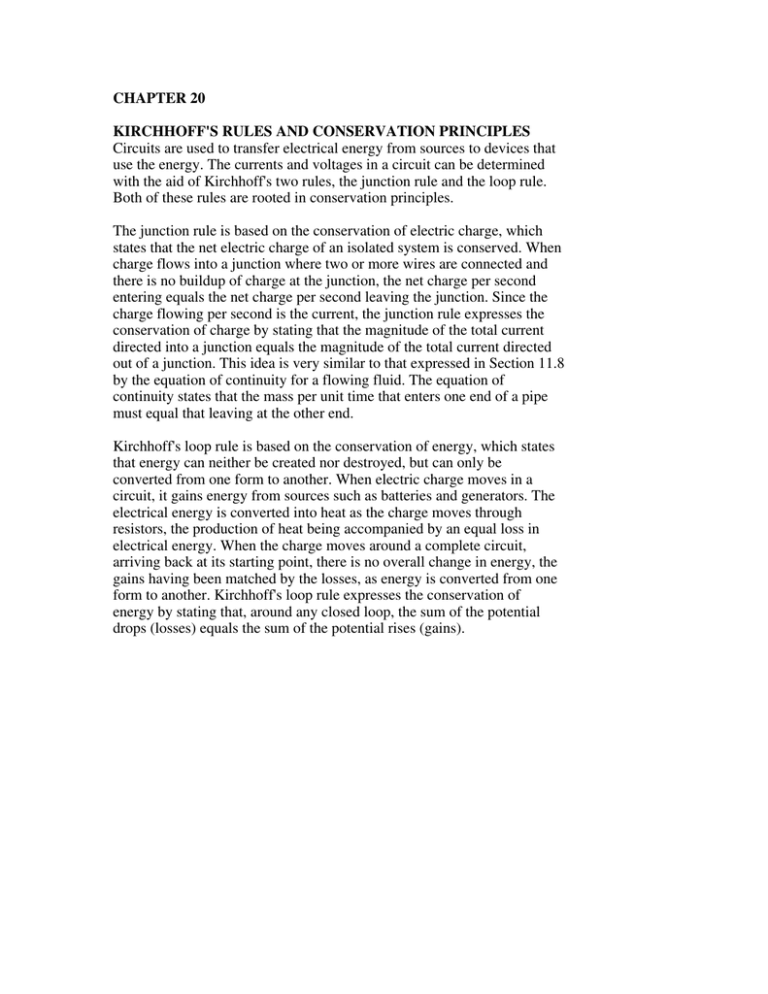
CHAPTER 20 KIRCHHOFF'S RULES AND CONSERVATION PRINCIPLES Circuits are used to transfer electrical energy from sources to devices that use the energy. The currents and voltages in a circuit can be determined with the aid of Kirchhoff's two rules, the junction rule and the loop rule. Both of these rules are rooted in conservation principles. The junction rule is based on the conservation of electric charge, which states that the net electric charge of an isolated system is conserved. When charge flows into a junction where two or more wires are connected and there is no buildup of charge at the junction, the net charge per second entering equals the net charge per second leaving the junction. Since the charge flowing per second is the current, the junction rule expresses the conservation of charge by stating that the magnitude of the total current directed into a junction equals the magnitude of the total current directed out of a junction. This idea is very similar to that expressed in Section 11.8 by the equation of continuity for a flowing fluid. The equation of continuity states that the mass per unit time that enters one end of a pipe must equal that leaving at the other end. Kirchhoff's loop rule is based on the conservation of energy, which states that energy can neither be created nor destroyed, but can only be converted from one form to another. When electric charge moves in a circuit, it gains energy from sources such as batteries and generators. The electrical energy is converted into heat as the charge moves through resistors, the production of heat being accompanied by an equal loss in electrical energy. When the charge moves around a complete circuit, arriving back at its starting point, there is no overall change in energy, the gains having been matched by the losses, as energy is converted from one form to another. Kirchhoff's loop rule expresses the conservation of energy by stating that, around any closed loop, the sum of the potential drops (losses) equals the sum of the potential rises (gains).


